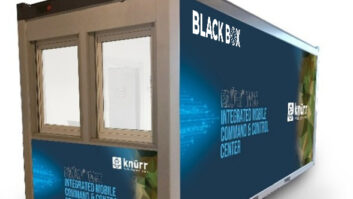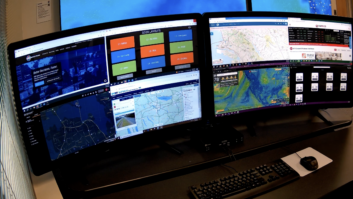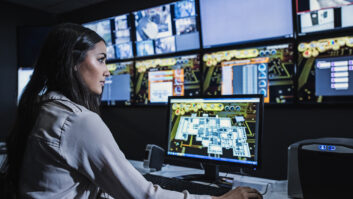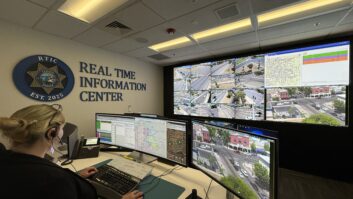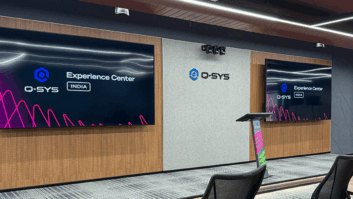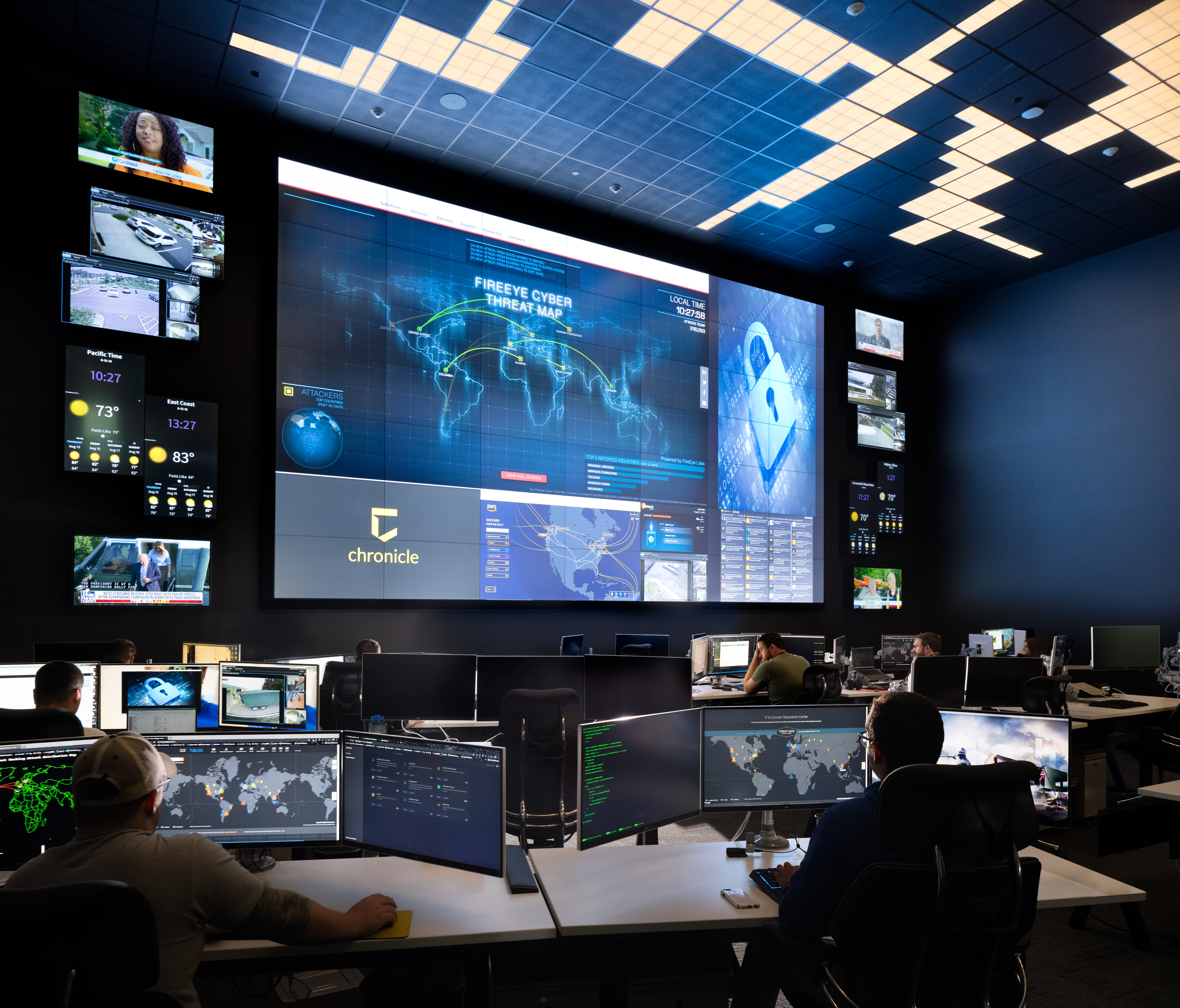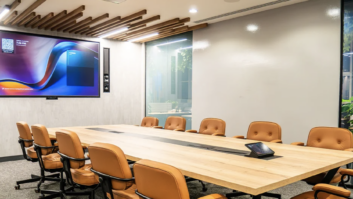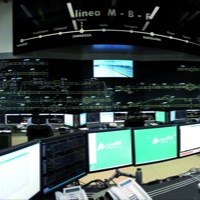
Ensuring that the workplace is designed for maximum efficiency, accuracy and comfort is particularly important in command and control centres, as Ian McMurray finds out
If Wikipedia is to be believed – and it isn’t always – ergonomics have been with us for at least the past 2,500 years, with Hippocrates describing how a surgeon’s workplace should be designed and his tools arranged. It is defined as the science of ensuring that the workplace, and the tools used for work, provide the optimum characteristics for doing the job.
Given that, in many command/control installations, decision-making is often critical, it should come as no surprise to find that ergonomics play a vital role in room, system and operator interface design. Maximising operator effectiveness requires a twofold approach that not only makes relevant information as accessible as possible, but also minimises the fatigue that can be an inevitable corollary of the control room environment.
It is generally agreed that, of all the information we take in, some 80% comes through our eyes – implying that, while control room design is a complex issue involving a broad range of factors, it is the screens that receive the most attention.
“For years, the focus was on brightness and resolution,” notes Guy Van Wijmeersch, design director, control rooms at Barco, who has written an impressive white paper on the topic of control room design. “But there are limits on human perception, and by the beginning of this century, we had all the brightness and resolution we needed. That’s when our focus shifted to maximising contrast under standard ambient light conditions: contrast is something to which the human visual system is very sensitive.”
Bright future
Brighter images have an important advantage in the control room environment. “Because control rooms now have brighter displays, it means that the rooms no longer need to be operated in low-light conditions – and that’s highly beneficial for operator alertness,” points out Mike Garrido, product manager for Multiviewers at Harris Broadcast Communications.
“We have introduced new high-gain screens that are designed to deliver excellent contrast ratio, and the best possible viewing angle,” says David Griffiths, market development manager for control rooms at Christie EMEA. “They’re designed to allow information to be presented to operators in the most appropriate manner for fast, accurate decision-making.”
Another area of focus for manufacturers is colour accuracy and consistency, and creating what looks as much like a single, large display as possible. “Maintaining accurate colour and brightness performance across the entire display is key in reducing operator fatigue,” says Ron Schouwenburg, product marketing manager, visual display systems at Mitsubishi Electric Benelux. “Even small differences in performance and screen geometry mean that operators perceive the display as individual screens and this has been shown to increase fatigue.”
He goes on to note the advent of LED illumination in cube displays as being an important development, given LED’s ability to reproduce a wider colour gamut: “The difference between orange and red could mean life or death in something like a railway control room.”
Eric Hénique, director of marketing and international sales at eyevis, identifies another advantage of LED illumination. “Traditional lamp-lit systems, especially those featuring a colour wheel, are prone to flicker,” he says, “and that has been demonstrated to be a cause of operator fatigue.
LED-lit cubes have solved that problem.” And, as Griffiths notes, eliminating the colour wheel also reduces the ‘rainbow’ effect for which DLP-based systems are known, and provides higher reliability and lower cost of ownership as well as improving colour accuracy.
Seamless scenes
Colour fidelity and consistency, contrast, resolution, brightness and lack of flicker all play key roles in presenting easy-to-see information without tiring operators. Yet another contributor is to minimise perceived gaps between each cube in the wall. “The best rear-projection DLP videowall displays can now be tiled together with an image-to-image gap less than half a millimetre,” points out Steve Seminario, senior product director for Planar’s videowall products.
“That gives the wall a virtually seamless look – and means that windows can be positioned and sized with less regard for the mullions.” He goes on to point out that configuring more, larger screens in a wall rather than fewer, smaller ones is often preferred in order to minimise the appearance of mullions.
Hénique says the mullions issue is a reason why flatpanel technologies continue to struggle to find a foothold in the command/control market – together with their 16:9 aspect ratio, which does not fit well in applications such as supervisory control and data acquisition that were designed for a 4:3 aspect ratio.
The AV systems also have a key role to play in two other elements of control room design that can have a significant impact on operator effectiveness: heat and noise. A warm room – or, to counter it, the continuous background drone of fans, whether from equipment or from air-conditioning – create conditions where drowsiness will almost certainly occur.
“There are two ways of dealing with those issues,” says Quirin Stamminger, head of marketing and international relations at Hetec. “One is that products like our video and KVM extenders and our multiview KVM switch produce almost no heat, so they only need fan cooling in high-ambient temperatures,” he says. “The second is to ensure that as many of the heat-generating systems as possible are installed in a separate server room with its own air-conditioning system.”
Flexible systems
How and where information is presented on the control room wall is of vital importance. Vital information needs, of course, to have priority, and provision needs to be made for exceptions such as alarms. Because no two control rooms are the same, manufacturers have responded by designing the maximum possible flexibility into their offerings. Manufacturers such as Mitsubishi Electric have broad and adaptable product ranges. “Versatility is the most important attribute we can bring to our display products,” says Schouwenburg. “What we have done is to develop a very flexible architecture to enable a systems integrator to deliver the most appropriate solution.”
“Our job is to provide videowalls that are customisable enough to perform well in the environment,” agrees Seminario, “regardless of viewing configuration, room size, ambient lighting, video source requirements and so on.”
There can be little doubt, though, that the flexibility each end user needs in order to maximise the effectiveness of control room operators mostly lies behind the screens with the wall control system.
Wall control
“The wall controller plays a key role in a productive operating environment,” says Rainer Stiehl, vice president for marketing at Extron Europe. “The wall controller hardware and user interface should work together effectively and be capable of managing the image data efficiently, while delivering high-quality images on-screen. The operator needs to be able to concentrate on the information on-screen and not how it gets to the displays. Ideally, the wall controller will feature a simple-to-operate user interface that mirrors a normal computer operator environment.”
“The ability to resize information, reproduce imagery at full frame rate and instantly select screen presets all help to improve decision making,” says Griffiths. “Flexibility, ease of use and expandability are watch words for our controllers.”
Van Wijmeersch sounds a note of warning, however. “Data has to be shown in the right context and should be related to other elements to become useful information,” he says, “so having a very flexible way of putting content on a large wall has some danger as the information can be cluttered. As such we’ve developed wall management software that can help in organising data and video in a structured way, improving the context, the quality and the usability of the presented information.”
Are there new AV technologies that can further improve control room ergonomics? It seems unlikely, at least in the near term. The rest of the AV industry is talking about 3D, gesture recognition and multitouch – but it’s hard to see how those will find a place in command/control environments. Inevitably, though, much depends on the specifics of the application.
“If you’re talking about a creative environment in a war room context with multiple experts, for example, then touch and multitouch could be a great help,” says Van Wijmeersch. “Perhaps in the future, creating a full virtual environment rather than an overview will provide a place for 3D.”
“Yes, touch displays might be an option for command/control tables in control rooms,” says Hénique, “but touch control of a wall 5m wide by 3m high doesn’t make much sense.”
Stamminger agrees that to have someone standing in front of a wall, obscuring the view of others, isn’t appropriate. And 3D? “After watching a 3D movie, many people complain of headaches or itching eyes,” he says. “That’s hardly conducive to good decision making. The technology would need to improve significantly.” He, in common with others, makes a distinction between what might be feasible on the main wall and what would work on each operator’s individual workstation, where touch control is increasingly used.
“We launched a multitouch option for our Seventy Series cubes at ISE this year,” notes Schouwenburg, “and we feel that its intuitive nature could be useful in certain command and control applications.” He goes on to point out, though, the fundamental importance of reliability. “For that reason, I’m not sure gesture recognition yet has a role to play.”
Interactive operations
But there is one area in which control rooms certainly mirror the rest of the AV world. “The videowall is becoming the interactive wall,” points out Garrido. “With a click of a mouse, the operators in a control room can interact with all devices without having to move to a different workstation or even change screens. They can access servers to replay video streams, access a camera to move or zoom, or even call up any PC in the facility to access important information. The software and processing power in the wall controller is making the operator’s job much easier – and therefore making the operator more effective.”
The picture that emerges is that the AV industry is playing a significant role in ensuring that mission-critical installations and their staff are able to perform at the optimum level. “Control room technologies continue to evolve, including displays, switching, processing, distribution, control systems, and even furniture,” says Stiehl.
“But, while technologies have improved, the best contribution to improving ergonomics in a command and control environment is collaboration between all the companies involved – manufacturers, integrators, architects – so as manufacturers, we’re not in direct control of the many factors involved with proper control room design that has human factors at its heart, but our contribution can be significant.”
www.barco.com
www.christiedigital.com/emeaen
www.extron.com
www.eyevis.de
www.harris.com
www.hetec.de
www.mitsubishidisplayengineering.com
www.planar.com
